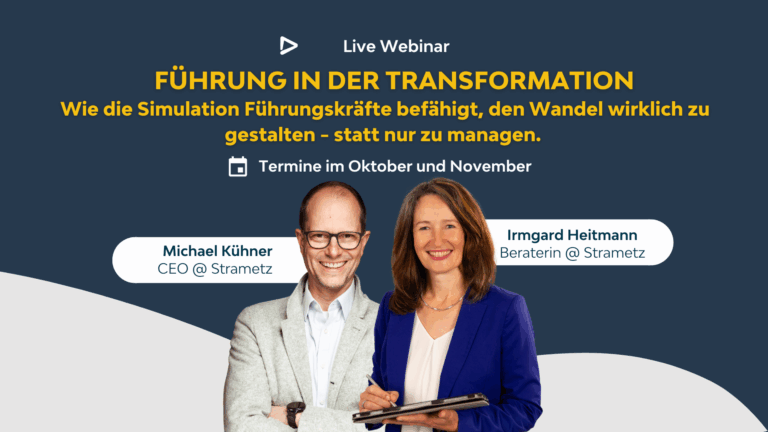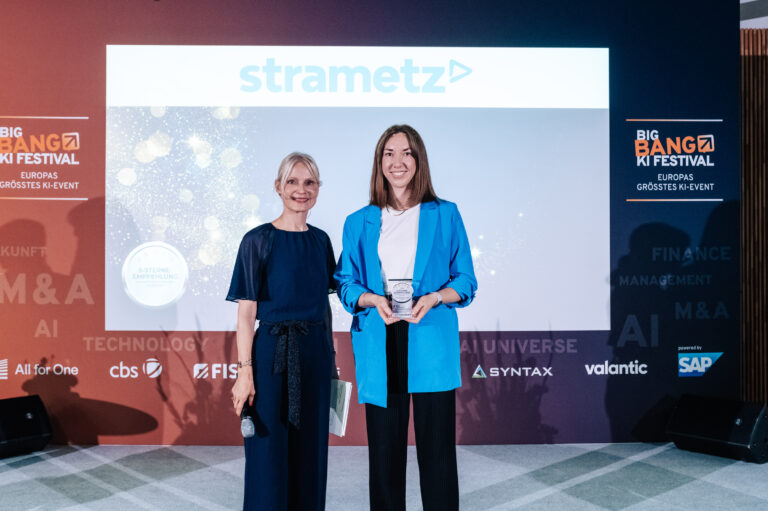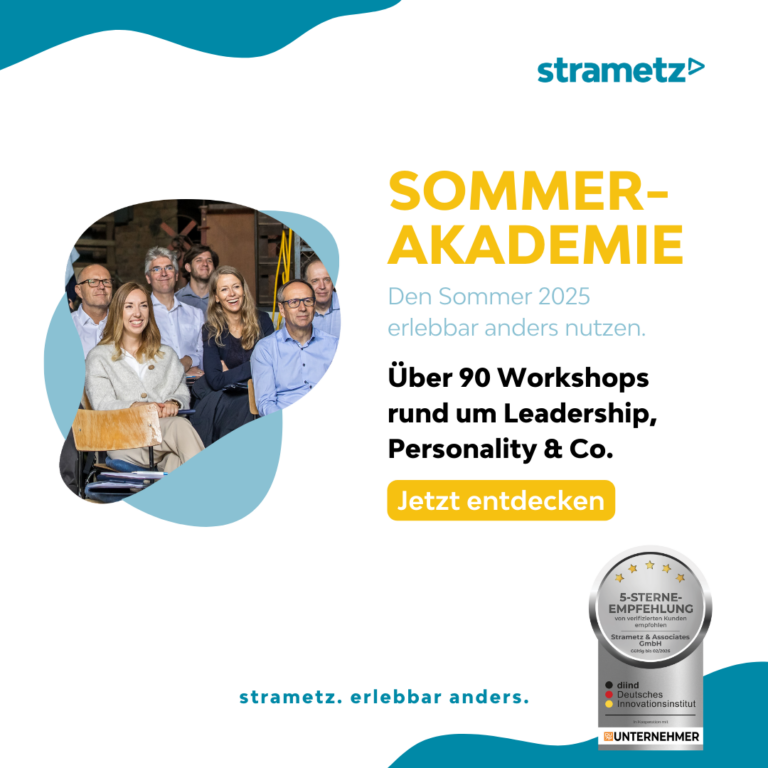How we can learn and develop employees optimally in today’s world. Active Learning as one answer?
Volatility, Uncertainty, Complexity and Ambiguity (VUCA) are the buzzwords that characterize our time today. The rapid development of complex technologies and markets has created an environment that is bringing about profound changes in a wide range of areas. Companies and people have to adapt and permanently learn anew. Questioning the old, evaluating the existing and creating the new.
We are constantly learning – even if we are usually not aware of it. We need to learn in order to navigate our living environment, and organizations also need to learn in order to stay competitive. Learning has a high value in our society and words like lifelong learning and the learning organization shape the discussions in the market. Learning is important and often decisive for survival.
But which forms of learning work at all? What is the best way to learn and generate knowledge to keep me fit for the future? How can key employees be supported and developed in companies today?
This post is about the important and highly relevant topic of learning. What can digital learning do and what is face-to-face learning best suited for? What is meant by Active Learning and simulations? And why are these methods so effective? We present our very special approach of Active Learning and give a taste of how we prepare our customers for new professional challenges and positions with Active Learning and learning-effective simulations.
Everything digital? The role of digital learning and its limitations.
Learning organizations, digital processes, permanent further development. Companies that do not develop their employees and make them fit for the future will be overtaken by more innovative, faster and better organized companies. What is the role of digital learning in staff training and where are the limits?
Continuing education offerings and forms of learning must adapt to the digital, volatile, and agile zeitgeist while generating a learning effect. For a long time, digital forms of learning in the workplace, such as e-learning, rapid learning or social learning, were considered the paradigm solution that employees could use flexibly and in a self-determined manner. But today we know that the learning and development effects of digital learning remain below expectations – even when the high development costs are taken into account.
Forms of learning, such as face-to-face learning in the form of traditional training with trainers on site, are an integral part of the continuing education industry and play a major role in HR development despite the digital age. Learning can only be digitized to a limited extent, as the best learning effects are generated within social situations and by activating emotions. We speak of Active Learning when real experiences are actively made in a constructed but realistic situation.
However, it does not make sense to assume that digital learning and face-to-face learning or forms of active learning are on the same page. Digital learning has an integrative character and combines the most diverse learning styles and technologies. In this way, forms of digital learning can be combined with classic learning methods and result in ONE training concept. Some learning content is better suited to e-learning, for example, while other development topics can be better addressed in situ, as in Active Learning.
Nowadays, it’s all about holistic overall concepts that do not mutually exclude either digital or active face-to-face learning. The good thing about today’s world is that it offers us many different learning opportunities, but we need to have knowledge about what type of learning and what learning channel or even technology is best suited for.
Getting off to an effective start: The basics of Active Learning and why it’s so effective.
Constantly on the lookout for efficient continuing education programs, a special approach has emerged: Active Learning considers a multidimensional learning approach that links actively lived social processes with problem-solving actions and thus generates rapid learning effects.
The advantage of this form of active learning is that the learner receives immediate feedback: In the situation, in the interaction and in the results. Processes are actively navigated, decisions are made, experience is gained, and lessons are learned from the results. Various processing dimensions are involved in learning: Information is not only absorbed, but directly processed and transferred into new action schemata.
Why does Active Learning work? The focus of this method is “learning by doing”. Active action is taken in realistic settings, with the system providing immediate feedback. In social exchange while working on a task and by generating surprising unpredictable scenarios, learning is effective and rehearsed for the real organizational setting. Successful actions are stored as positive and repeated. Actions that have produced resistance or negative results can be reviewed and adjusted.
Our Active Learning approach: High learning effects through highly activating settings
At Strametz [&] Associates, Active Learning means learning through activity and experience, through interactive social contexts, and through reflection and feedback. This triad enables our participants to generate a high learning momentum during the training and direct transfer performance later on in the job.
Strametz [&] Associates focuses its participants not only on knowledge acquisition, but on direct implementation in concrete constructed situations inspired by everyday work. Participants act in their roles and solve work tasks. We work with professional trainers who accompany and challenge our participants in the situations. Each training sequence is supervised and followed up in detail, ensuring reflection and feedback and thus a holistic development of our participants.
Our approach to training is always appreciative, but never judgmental. Mistakes may and should even be made and the participants can try themselves out. In the subsequent analysis, we give our participants a detailed assessment of their current position and show them their areas of development for achieving their individual personal and professional goals.
Leadership simulations as a method in Active Learning create high learning effects.
Simulations can be used to quickly acquire the basics of decision-making processes and practice their practical implementation. Simulations help with personnel decisions and development and create a realistic setting in which professional feedback can be given and development potential can be explored.
In simulation training, a model is constructed, which is quite close to the work setting, for example, with the participant going through the simulation process in their role. At the end, this process is evaluated and feedback is given for further development steps.
“Learning by doing” enables direct learning effects: Successful actions are repeated and the rules are learned and internalized, negative experiences are tested and new actions are adapted. In this context, one can also speak of experiential learning. The principle of “Trial [&] Error” is applied by trying out until an action shows success. Successful action patterns are learned and transferred to the individual action set.
Different levels are triggered in this approach: cognitive processes are triggered that are reflected in concrete actions and can be verified in direct exchange. Social dynamics are triggered and surprising elements are created to which the participant must react and in turn produce new actions.
Simulations can be individually adapted to any company setting or hierarchical level. This is what makes this approach so versatile and modular. Strametz [&] Associates continues to design exciting new simulation concepts with its clients. Good simulation concepts include elements such as surprises, conflicts, contradictions, time pressure and irritations.
Active Learning works and optimally prepares employees for today’s challenges
How do we learn today – especially in times of permanent structural changes and rapid developments? What forms of learning fit into this time? How can HR departments prepare their employees for the ever-changing requirements. What forms of learning are effective? Active learning as a form of learning aimed at acquiring direct experience could be an answer to today’s continuing education requirements in the market.
Our new whitepaper “Active Learning” focuses on this particular learning approach and also provides a comprehensive overview of learning in general, digital learning, current developments in brain research and findings from learning research. Active Learning and Digital Learning are contrasted and discussed in their current context.
We present our very special Active Learning approach, our philosophy, our way of working and attitude and describe how we work together with our participants to optimally develop their profiles and professional goals.
Active Learning as an answer to our VUCA-influenced world, creates fast and sustainable learning and further development effects and generates a stable platform for a confident and mature appearance e.g. in new professional positions and organizational challenges.
Read more about this interesting approach, how it works and its effects in our whitepaper “Active Learning” now! Just take a look at the know-how section.
I hope you enjoy reading
Your team from Strametz











